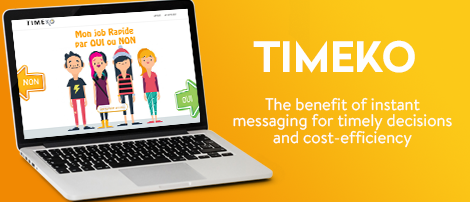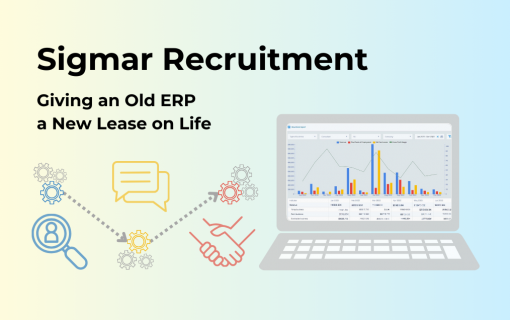A Messaging System to Connect Temporary Worker Companies and the Workforce

- ERP integration capability and standalone use
- Message broadcast for faster and cost-efficient dialogue
- Multi-channel messaging to ensure comprehensive reachout
Context
Client
A France-based client had an idea to enhance enterprise resource planning system with a two-way messaging capability. The web application that has a potential to transform the way recruitment is conducted and meet the pains of temporary workforce agencies is brewed on the power of instant messaging to bring together a recruiter and a candidate in the most natural way.
The challenge
The peer-to-peer business model of the application included two categories of end-users with their own pains and idiosyncrasies:
- TW agents – facing unproductive, costly, and stressful process of workforce search;
- Temporary workforce – not particularly well-versed in or in possession of cutting-edge tech gadgets.
Both categories demanded a cost-efficient and user-friendly solution for getting connected.
Temporary workers are usually hired for a period of the ½ day – 2 months, they’re semi-skilled and work with 4-5 agencies simultaneously. So TW agencies strive to find and secure the resources with the right skill.
Responsiveness is a competitive advantage in the TW market. The ‘finding’ part is easy via ERP that many companies employ to match candidates to jobs. ERP’s help manage:
- Candidates
- CVs/skills
- Status (available/not)
- Contracts
- Payrolls
However, the ‘challenge’ is how to connect on time and secure a prospect in a more effective manner, by reducing all the back-and-forth of calling and texting to the bare minimum. Also, databases are in need of constant updates, which is in itself a non-productive, repetitive drudgery.
Solution
Timeko Web to cope with TW companies’ nightmare
The Timeko enterprise messaging web application brought about the changes in the way agencies reach out to prospects:
- A faster way to connect and get a response, which beats the competition by a mile.
- Spares the trouble of leaving a message in case of unavailability and waiting for a callback.
- Quickens daily status updates of large databases of candidates, which is a prerequisite of an effective candidate search.
- A better solution than just integrating SMS with ERP as it allows to manage responses more effectively; it’s also more cost-efficient, given the cost of licenses and possible issues with different OS’s.
- Gives the extra benefit of broadcast messaging, gets more done with less money.
The app’s logic
The sorted candidate list is manually or automatically (in case of ERP integration) added to the web application. Then two types of messages can be created to reach out to the candidates:
- A yes/no-message to learn their availability and agreement to an offer.
- An information update to ‘yes’-candidates on the offer details.
Following their responses, the candidates are sorted in ‘all’, ‘yes’, ‘no’, ‘other’ and ‘no response’ groups (filters). The app’s logic of prioritizing ‘yes’-responses to further communication by moving them to the top allows for faster reach-out.
Features
- Messages – allows to create/edit/send/receive/view/archive/elicit dialogues and dialogue strings with internal and external users.
- Message types – categorizes messages into ‘offers’ (requiring a ‘yes/no’ response) and ‘news’ (information updates).
- User categories (filters) – sorts users into groups on the basis of response – for the ease of handling.
- Push-notifications (numeric badges) – mark types of responses and updates.
- Message broadcast – allows sending an identical message to multiple users simultaneously.
- Send invitations – allows extending the user base by sending messages to external candidates.
- Multi-channel – gives users the flexibility to send short messages across different channels (SMS, Facebook, email) with further consolidation of answers in Timeko.
Technology lifehacks
The backend implementation involved a lifehack – to create message queues and broadcast messages to various channels with microservices, which is an optimal solution to bypass frameworks and the parasite code their use entails.
There’s a possibility of integration with points of contact, where information is time-sensitive and accuracy is important.
Read also: How to Create a Chat App like WhatsApp
Results
The web application we helped to create proved a success and the project is still underway. The second release focussed mainly on streamlining the app by eliminating unnecessary features. Stay tuned for further updates on the product.
Technologies
- Backend
- PHP, ZF2 (REST API), microservice for message sending
- Frontend
- angular 1, angular-material
- DB
- PostgreSQL











